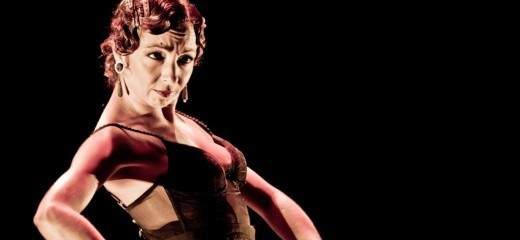
Photo: Joshua Pelta-Heller
Re-imagining Flamenco: Rosario Toledo and Pasión y Arte at the First Philadelphia Flamenco Festival
By Carolyn Merritt
As I sat listening to the experts expound on the state of flamenco at the First Philadelphia Flamenco Festival symposium, my eyes shifted downward for a moment. At the dais with moderator Lois Welk (Dance/USA Philadelphia), Robert Browning (founder, World Music Institute), and Michelle Heffner Hayes (author,
Flamenco: Conflicting Histories of the Dance), was master flamenco dancer Rosario Toledo, around whom the festival revolved. A two-week celebration of flamenco organized by Elba Hevia y Vaca, Director of Philadelphia’s all-female flamenco company Pasión y Arte, the centerpiece of the festival was Toledo’s
Del Primer Paso and the group work
Complices, commissioned for PyA. Like the others at the symposium table, Toledo was dressed somewhat formally in a long red dress, but her scuffed-up white sneakers, fluorescent orange laces untied, disrupted an otherwise straightforward image of femininity. This tiny detail caught my eye, for it belied the complex themes at the heart of the entire festival – the intersection of transgression and tradition, the reconciliation of feminism and femininity, the struggle to reclaim “beauty” on new terms as one among other options for the female flamenco artist.
Heffner Hayes opened the symposium with video examples of several of Spain’s renowned female rebels. Like Toledo, they deconstruct the language of flamenco in order to push its boundaries, yet remain “steeped in tradition.” We saw a female protagonist infusing flamenco with the vocabulary of modern dance in the work of Belen Maya, who coined the term anti-guapa (against beauty) to protest the relegation of women to stereotype (think polka-dots, castanets, flowers, and that impossibly long ruffled gown, the bata de cola). Then, Rocío Molina and Laura Rozalén flipped the stereotype on itself, as Molina (in drag) and Rozalén (as the beloved) seduced one another. The musicians and singers encircled Molina and Rozalén when they embraced, suggesting an evolving art form capable of celebrating female-female relations, yet deeply rooted in the tradition of flamenco as family.
Tradition does not only exist in the past. Toledo too blazes forward with an eye to the past, weaving themes of family, tradition, feminism and femininity through each work. With Complices (Allies), she examines fundamental human dualities masculinity/femininity, individual/community–through the five female dancers of Pasión y Arte (Eva Arriaga, Alicia Blumenfeld, Kumiko Koide, Leslie Roybal, and Rocío Sánchez). As the piece opens, the women stand in a wide circle, facing outward, each in a distinct floor-length black gown, then slowly walk backwards into a spotlit clump. They wrap around one another’s legs and arms; fingers and wrists flex and circle in intricate patterns; hips swivel, rolling limbs echoing the strum of the guitar; they stand and stomp, nearly still but for the tiny ruffling of skirts that reveals the rhythm’s source.
From this initial image of supporting one another and the protection of their larger “family” (guitarist/ percussionist François Zayas, singer Barbara Martínez, and pianist John Stenger), the women venture into more personal territory, showing off particular strengths in solo moments and adding personal flair to unison phrases. The result is a highly structured piece, full of pleasing moments of synchronicity; each emerges as an individual in whom strength and vulnerability, ferocity and femininity exist in accord. In this stunning ensemble, I noted especially Alicia Blumenfeld’s fierce presence (her movements seem to arise from several feet beneath the ground), Rocío Sanchez’s nearly possessed zapateo (footwork), and Kumiko Koide’s bewitching flirtations.
But it is in Del Primer Paso (The First Step, premiered in 2007), a tour-de-force exploration of her path to flamenco, that Toledo struts her stuff. Not only a master of the form, she is a performer of star caliber. The opening is deceptively simple: in black tutu and pointe shoes, she acts out her early studies in classical dance with Chaplin-like humor, charming us with little more than a raised eyebrow or sly smile. This could be mistaken for cute, but it is the setup for an hour-plus elaboration of her journey as an artist and an education in the depth of the flamenco form.
As in the history of flamenco, the cante (song) came first for Toledo, and this moment is captured in her initial duet with singer José Valencia. A towering figure, Valencia veers on overpowering Toledo with his bellowing cante. (Indeed, I wondered whether all of Old City reverberated with his echoing lament.) But Toledo rises to the occasion again and again, matching his presence, urging him on, responding to his voice, to the rhythms of his palmas (clapping), and to Dani de Morón’s sweet toque (guitar) in the back and forth of dance, song, and sound. If Barbara Martínez’s voice seems to stop time in Complices, José Valencia’s moves it. We don’t need to understand the verse: his cry is a call to prayer, his howls the voice of human screams, transporting us back to the suffering and oppression that gave birth to flamenco and to the solace it engendered.
Still in pointe shoes, Toledo mimics flamenco’s zapateo until a proper pair of flamenco shoes descends from above. Like the shoes on this string, she is hooked. Enchanting us as flamenco enchanted her, she marks her transformation through costume changes, rhythms, and feelings. In shawl and castanets, she mounts a table and taps out furious compases; following female pioneers like Carmen Amaya, she dons the traditionally male pantsuit; in the pièce de résistance, the bata de cola, she shifts from comedian to femme fatale to toreadora, poking fun, flirting, thrashing, and ultimately conquering the quintessential prop of the female bailaora. The show’s finale is a raucous declaration of female triumph, guapa y anti-guapa a la vez—at once beautiful and beyond beauty.
Flamenco is a way of life. In addition to the performances and symposium, the festival featured master classes with Toledo, as well as a film night, offering a glimpse into Pasión y Arte’s residency with Toledo (Lise Raven’s short documentary El Proceso), and a view of flamenco in other parts of the U.S. (Carolina Loyola’s work-in-progress documentary, Inheritors of a Burden). Loyola’s film provides context for flamenco in the U.S. by exploring the figure of José Greco, the Italian-born, New York-raised dancer and choreographer who brought flamenco around the world through his touring company. In one priceless scene, the filmmaker peruses a lifetime’s collection of flamenco costumes in the basement of his widow, Ana Börger-Greco. Equally captivating are interviews with flamenco dancers and musicians in different parts of the U.S. From the Puerto Rican transplant who connects with his heritage through the dance, to the American guitarist who finds something “primal” in the music, to Elba Hevia y Vaca’s description of the “magical” communion between dance, song, and music, we begin to see why flamenco, as Loyola puts it, “resonates with people all over the world.”
Capturing the uncaptureable. Preparing my review of the festival, I spend hours paralyzed before my keyboard, racking my brain for the words that might do justice to it, words to describe an experience that transcends language. One phrase emerges from my notes in bold capital letters: I WANT TO DANCE FLAMENCO.
Pasión y Arte, featuring Rosario Toledo. First Philadelphia Flamenco Festival. Christ Church Neighborhood House (New Stages for Dance Initiative), March 18-April 1.
By Carolyn Merritt
April 4, 2012


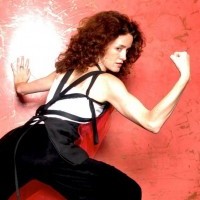
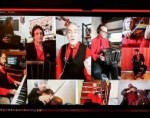
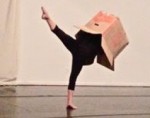
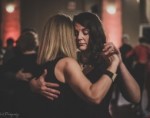

.png)


